Why can’t I access this file?
Possible reasons you cannot access this file:
- Your membership has expired.
- The file is restricted to certain users.
If you are seeing this message in error, please contact us.

Possible reasons you cannot access this file:
If you are seeing this message in error, please contact us.
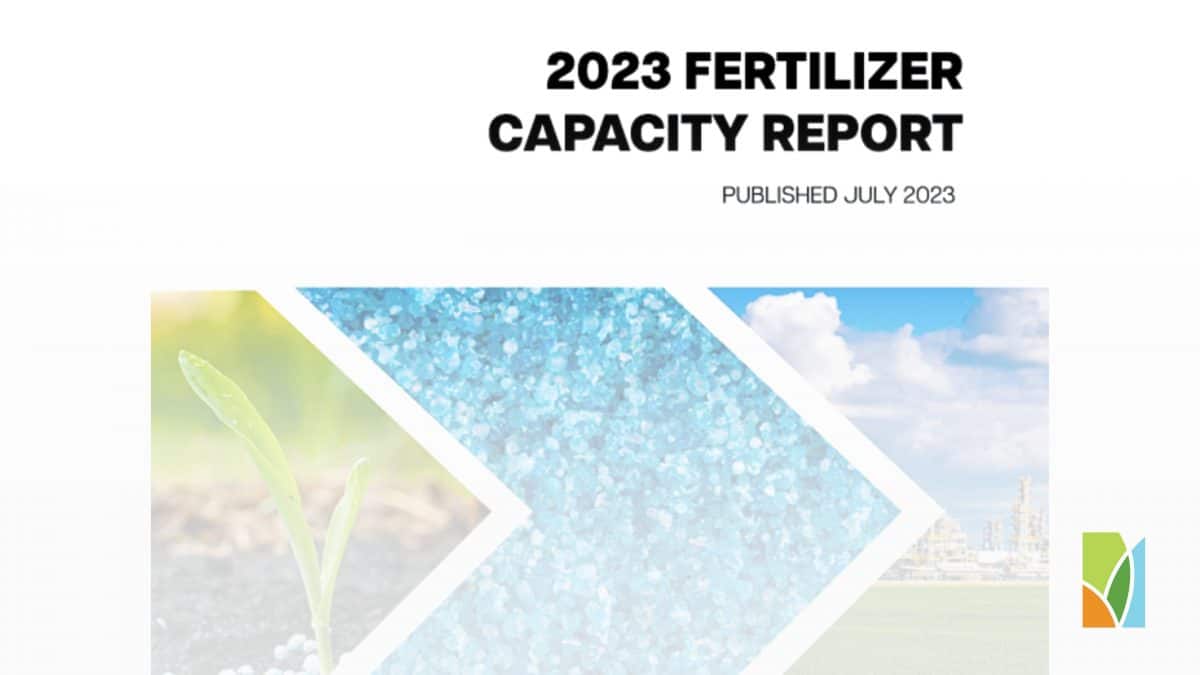
Possible reasons you cannot access this file:
If you are seeing this message in error, please contact us.

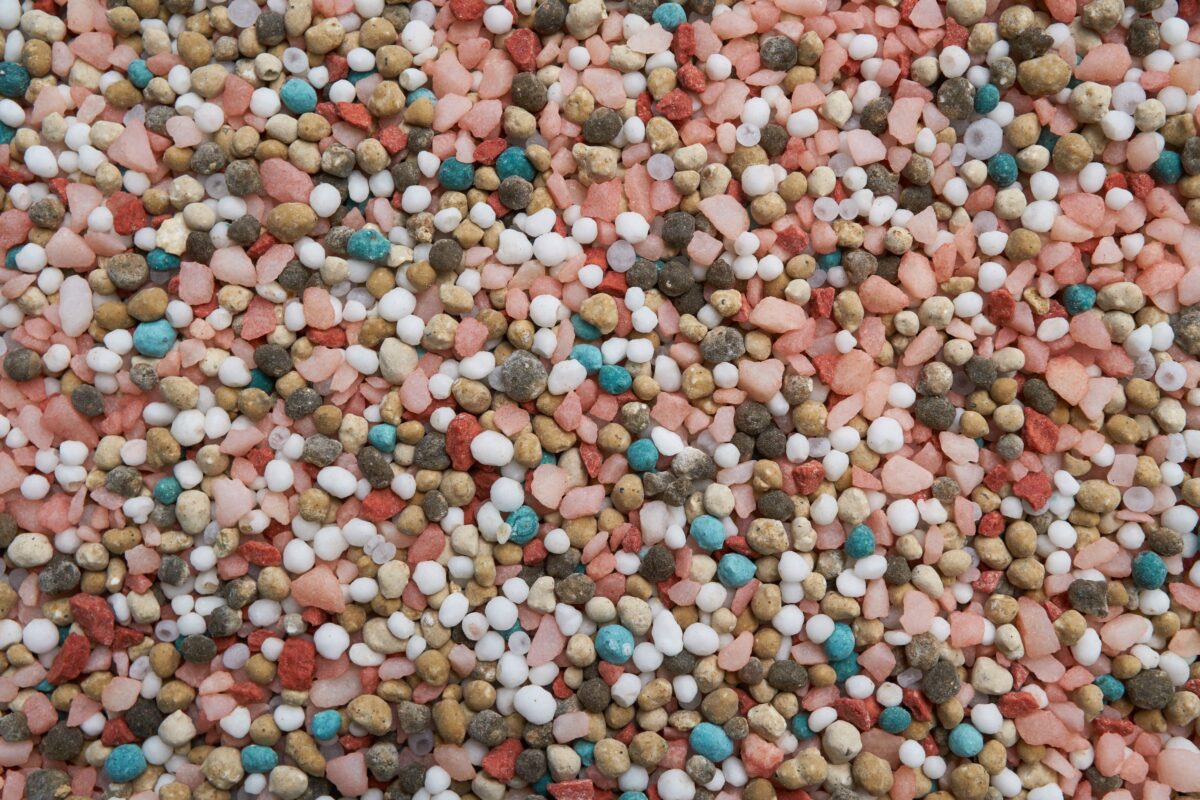
Possible reasons you cannot access this file:
If you are seeing this message in error, please contact us.

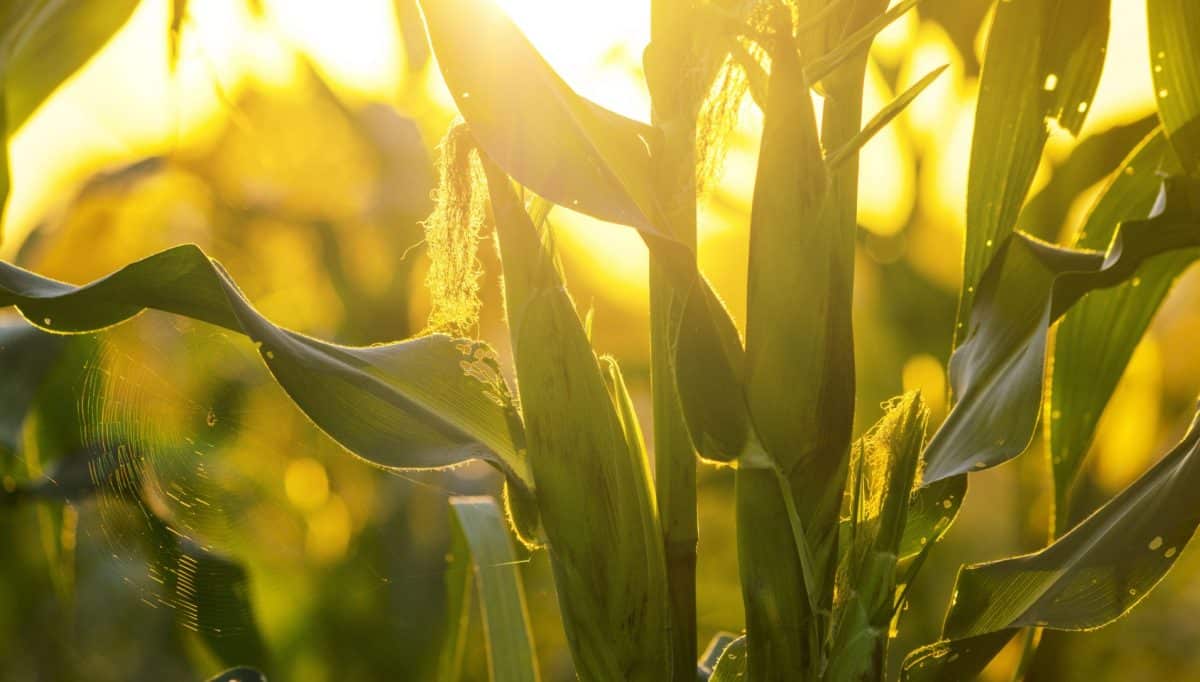
Crops: Corn for grain Corn for silage
4R Practices: Source Rate Time Place
Lead Researcher:
Dr. Matt Helmers
Professor
Iowa State University
Start Date: 2017
End Date: 2021
Currently, there is a concerted effort from industry, universities, and state and federal action agencies to promote the 4R nutrient management approach on-farm– considering the Right source, Right rate, Right time, and Right place– for managing nutrient additions from commercial fertilizer and organic materials. With its massive acreage and intensive nutrient use, corn production systems are an important focus of the 4R program. To convince farmers to adopt the 4R approach, and to ensure that production, soil health, and environmental goals are realized, there is a critical need for field research that measures responses to 4R management systems across a range of soils and agro-ecosystems within the main corn producing areas of North America. Limited research data linking agronomic and environmental performance of 4R practices across a wide variety of conditions is a critical research gap leading to high uncertainty regarding practice efficacy for both farmers and environmental program and policy decision makers. Along with production and soil health effects, full accounting of the multiple forms and pathways of nitrogen (N) and phosphorus (P) is essential to understand the environmental consequences of current and advanced best nutrient practices. A thorough accounting of the N balance could also serve as an early warning for practices that are improving or reducing soil carbon and thus soil health because soil carbon-nitrogen interactions dramatically impact soil organic matter accumulation and carbon sequestration. Further, potassium (K) nutrition of crops has attracted renewed attention, and although not of environmental concern, K requirements of crops are nearly the same as those of N, and cannot be ignored. We propose the creation of a coordinated field site network strategically distributed across the cornbelt with unique infrastructure that would collect similar agronomic and environmental measures thereby enabling for the first time knowledge synthesis across varied soils, climates, and management systems. Quantification of the impacts of 4R management on crop yield, P, K, and nitrate (NO3) losses in water, N losses to the atmosphere, and changes in soil health at the same location under a range of management practices is severely lacking. In addition, we are aware of no studies explicitly aimed at understanding the interactions between 4R management strategies and soil health.

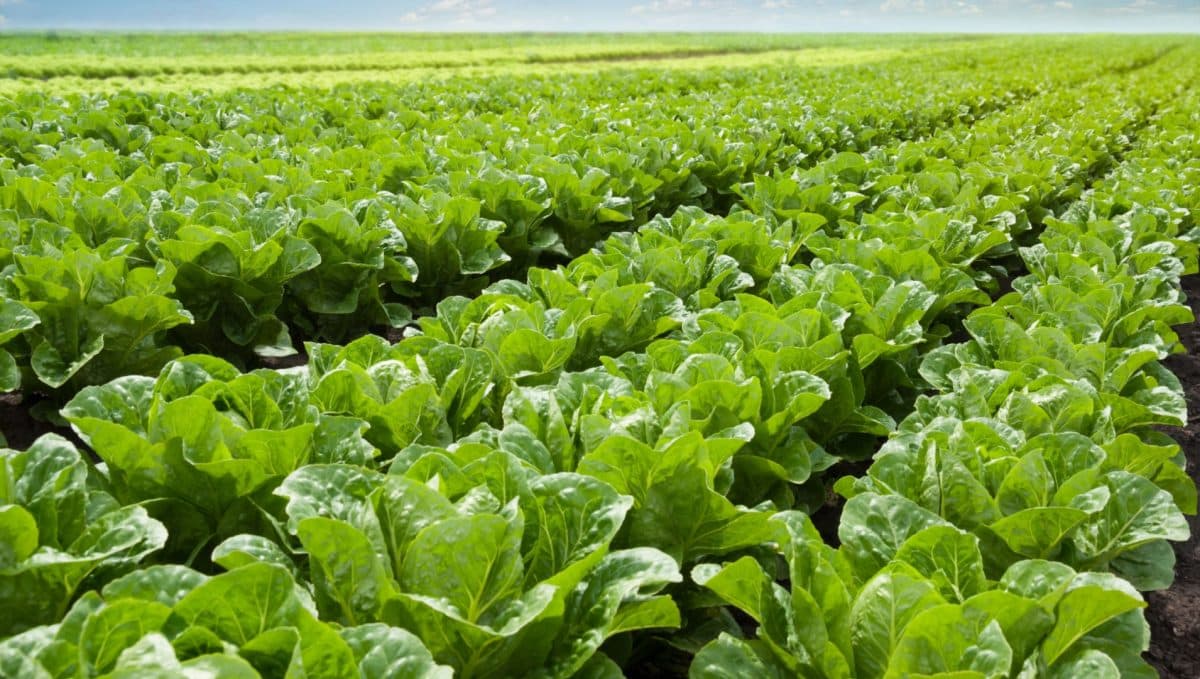
Crops: Apples Broccoli Cauliflower Celery Lettuce
4R Practices: Rate Time Place
Lead Researcher:
Dr. Charles Sanchez
Professor
University of Arizona
Start Date: 2019
End Date: 2022
Intensive vegetable production in the desert receives large annual applications of nitrogen (N) fertilizers. Soils in the southwestern United States are generally low in organic matter and amounts of N applied range from 200 to 400 kg/ha. Crop recoveries are less than 50%. There are numerous possible fates of fertilizer applied N in addition to the desired outcome of crop uptake. Over the past 15 years, researchers with the University of California and University of Arizona have developed strategies for efficient nutrient management. For N, these practices include fertilizer timing, pre-side dress plant and soil testing, and improved irrigation management. However, these guidelines have been applied to uniform management schemes in spite of the fact that fields often show considerable variation in soil properties. In-field soil textural variation is a significant factor affecting the mobility and availability of N. The prospect of variable rate (VRT) pre-plant and in-season N fertilizer application has not been evaluated in desert vegetable cropping systems. Certainly, varying N fertilizer applications by soil management zone makes sense. Further, emerging optical sensor technologies expand opportunities for in-season N management. We have evaluated VRT for pre-plant P fertilization in the desert. However, data exploring the potential for using VRT for N management is limited.
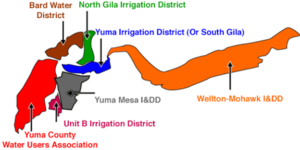
Studies conducted within Bard Water District, Yuma County Water Users Association, and Yuma Irrigation District in 2019-2020.

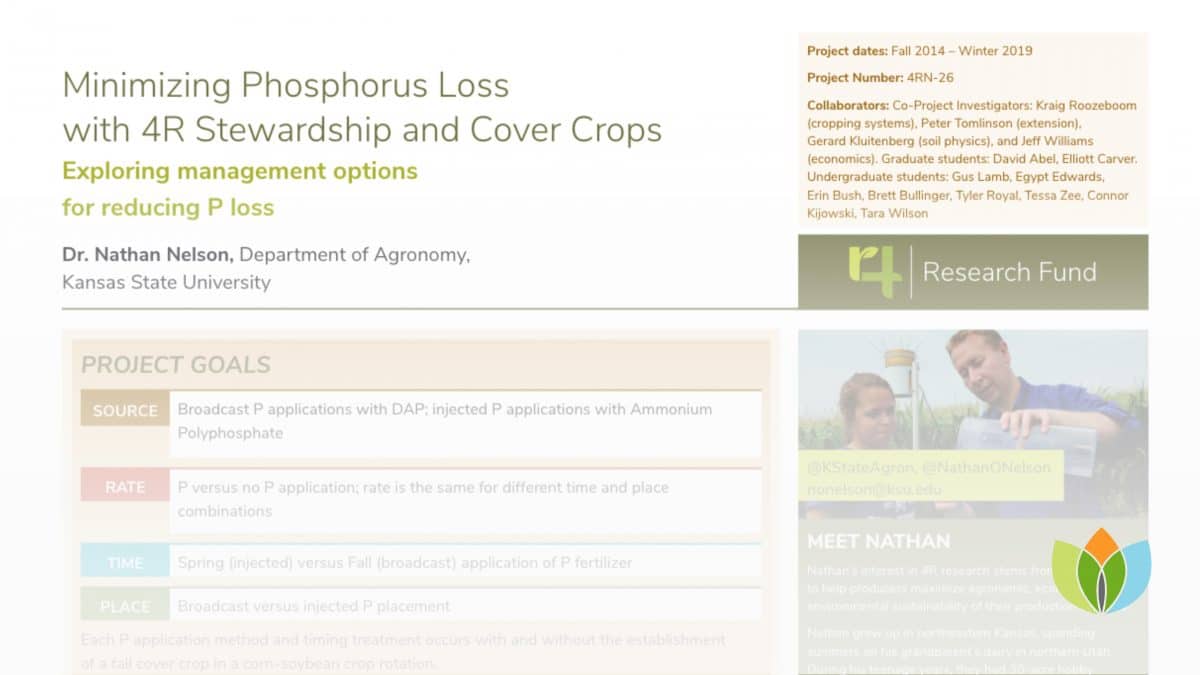
Crops: Corn for grain Corn for silage Soybeans
4R Practices: Time Place
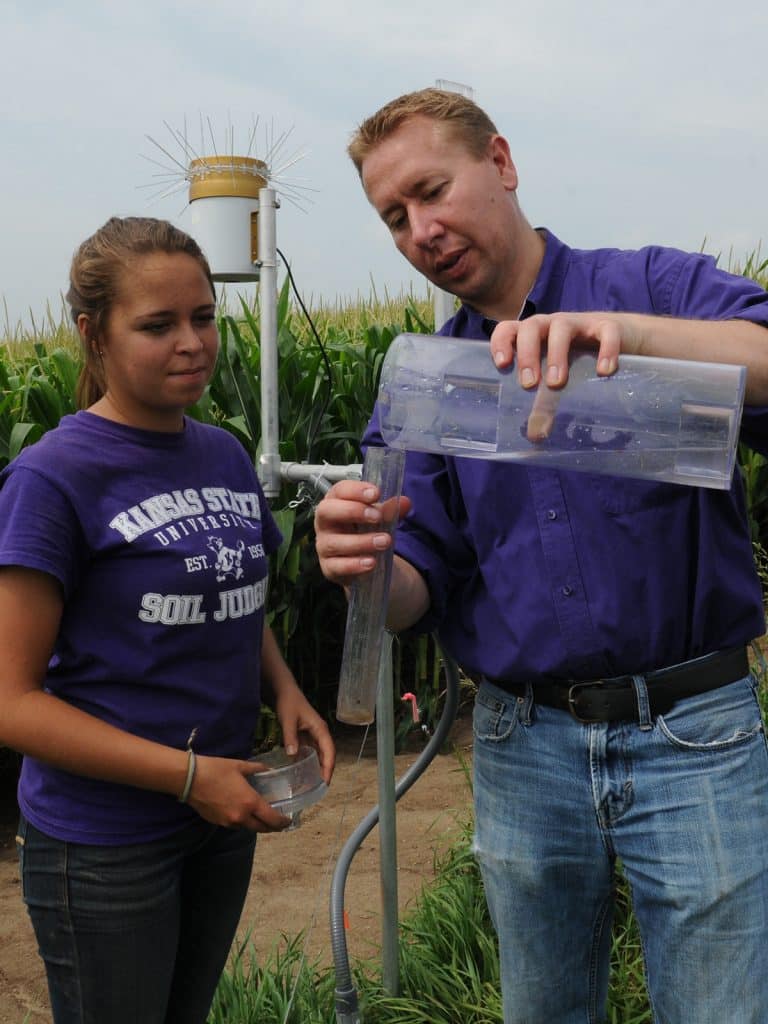
Lead Researcher:
Dr. Nathan Nelson
Professor
Kansas State University
Start Date: 2014
End Date: 2019
Fertilizer timing and placement can have large impacts on P loss. Currently recommended BMPs have focused on sub‐surface fertilizer placement as the recommended method for reducing P loss. In contrast, economic and farm management factors may encourage producers to use surface‐broadcast P applications in the fall. Weather patterns typical of the Great Plains indicate that a shift to fall applications may also reduce P loss from surface applied P fertilizer compared to spring surface applications. We need field-scale data comparing P loss from fall surface applied P fertilizer to sub‐surface spring‐applied P fertilizer so we can make accurate recommendations for the right timing and placement combinations to minimize P loss.
Furthermore, cover crop use may protect against potential increased P loss associated with fall surface‐applied fertilizers, thereby allowing producers wider flexibility in fertilizer management while maintaining minimal P loss. However, we need more information about the effects of cover crops on P loss and the interaction between cover crops and P fertilizer management. Because cover crops can also impact crop yields, we need comprehensive analysis that includes cover crop and fertilizer management impact on multiple agronomic, environmental, and economic factors, including grain yield, N uptake and use, and P uptake and use, input costs, gross return, net return, N and P loss, sediment loss, and runoff volume. Producers and fertilizer dealers recognize the value in this information.





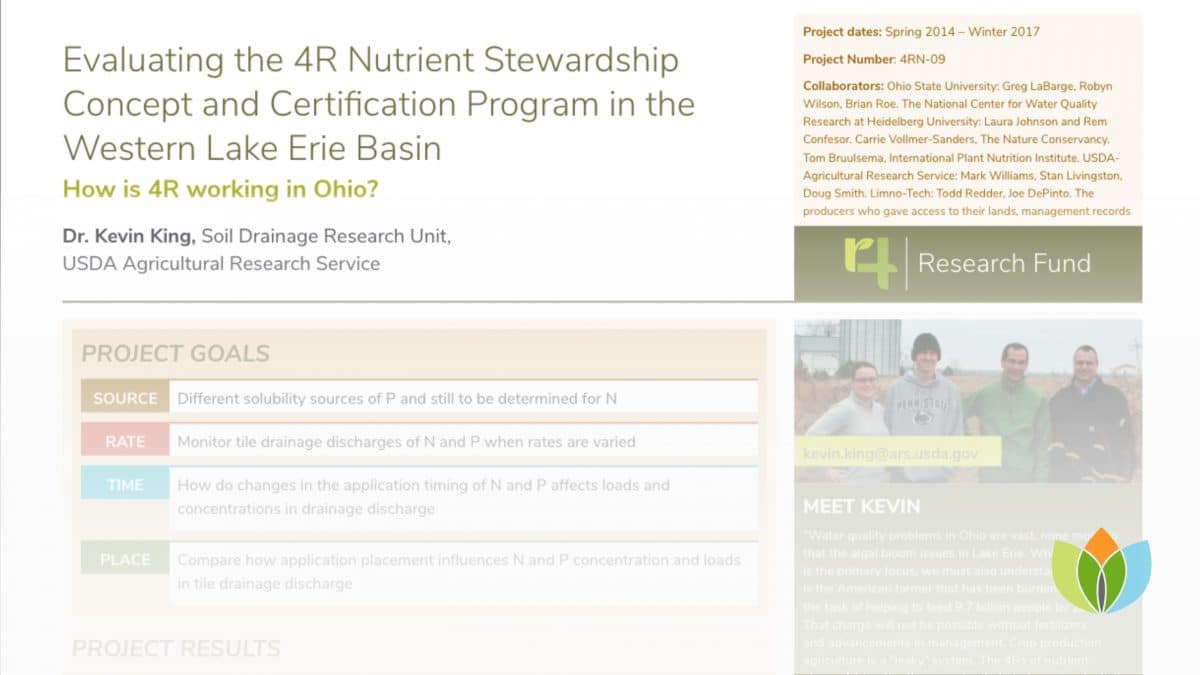
Crops: Corn for grain Corn for silage Soybeans
4R Practices: Source Rate Time Place
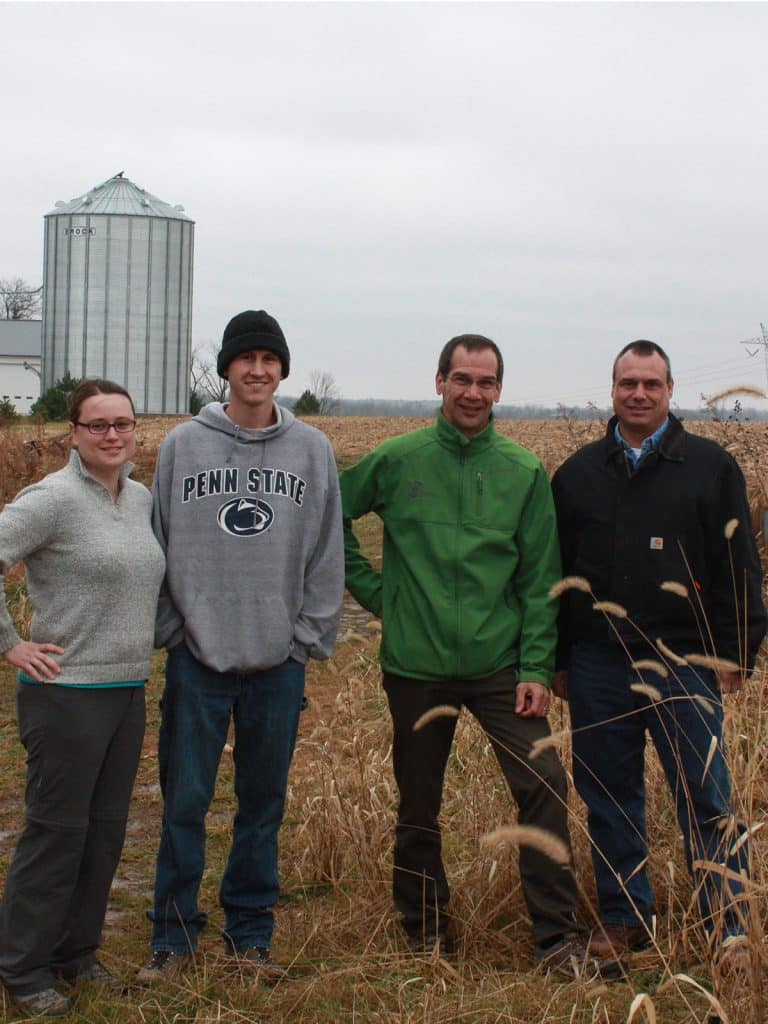
Lead Researcher:
Dr. Kevin King
Research Soil Scientist
USDA-ARS Soil Drainage Research Unit
Start Date: 2014
End Date: 2019
Lake Erie is part of the Great Lakes System, which contains 20% of the surface freshwater in the world. Annually, tourism associated with Lake Erie generates more than $7.4 billion in direct sales, while Lake Erie seaports generate approximately $1 billion in revenue (USDA-NRCS, 2005). Sport fishing within Lake Erie has also been estimated to generate hundreds of millions of dollars annually. Unfortunately, over the past five years there has been an increased incidence of algal blooms and proliferation of aquatic weeds. Not only are algal blooms aesthetically unappealing, but they also can cause the formation of hypoxic zones in stratified waters. In some instances, algal blooms contain toxins that are harmful to humans and aquatic life. The increase in nuisance and harmful algal blooms (HABs) in Lake Erie has led to greater water treatment costs, reductions in fish populations, and poor water quality that has negatively impacted fishing and tourism industries within the Great Lakes region.
The primary cause of water quality impairment and algal blooms within Lake Erie is the input of excess nutrients, such as nitrogen (N) and phosphorus (P), often transported from agricultural lands. Many growers have accepted responsibility and are taking action to improve soil health and reduce nutrient losses from their fields. However, there are still additional opportunities through scientific and technological advancements to help growers keep nutrients in their fields to benefit both crop growth and watershed health. 4R Nutrient Stewardship is an innovative approach to nutrient management that considers the economic, social, and environmental dimensions of nutrient management. Although the concept is relatively simple (apply the right source of nutrient, at the right rate, at the right time and in the right place), following the 4R principles has the potential to significantly reduce the amount of nutrients transported to Lake Erie as well as increase crop nutrient use efficiency.
One way to encourage adoption of the 4R principles is to first define key actions that characterize nutrient and water stewardship and to recognize good stewardship through a credible certification program. The 4R Certification Program Advisory Committee, led by members of the agricultural industry, grower representatives, and supported by The Ohio State University, state government, and facilitated by The Nature Conservancy, have been meeting since the spring of 2012 to create a program that identifies best management practices (BMPs) and encourages nutrient service providers (e.g., agricultural retailers, crop advisers) to adopt the 4R Nutrient Stewardship concept. The 4R Certification Program will help these nutrient service providers tailor 4R principles to each grower’s unique needs, while minimizing nutrient losses and maximizing crop uptake. This program represents an effort by the agricultural industry to actively embrace a scientific-based approach to nutrient management and sustainable crop production. Such an effort diminishes the need for and the likelihood of public regulations that might otherwise be implemented to decrease nutrient loading to surface waters.




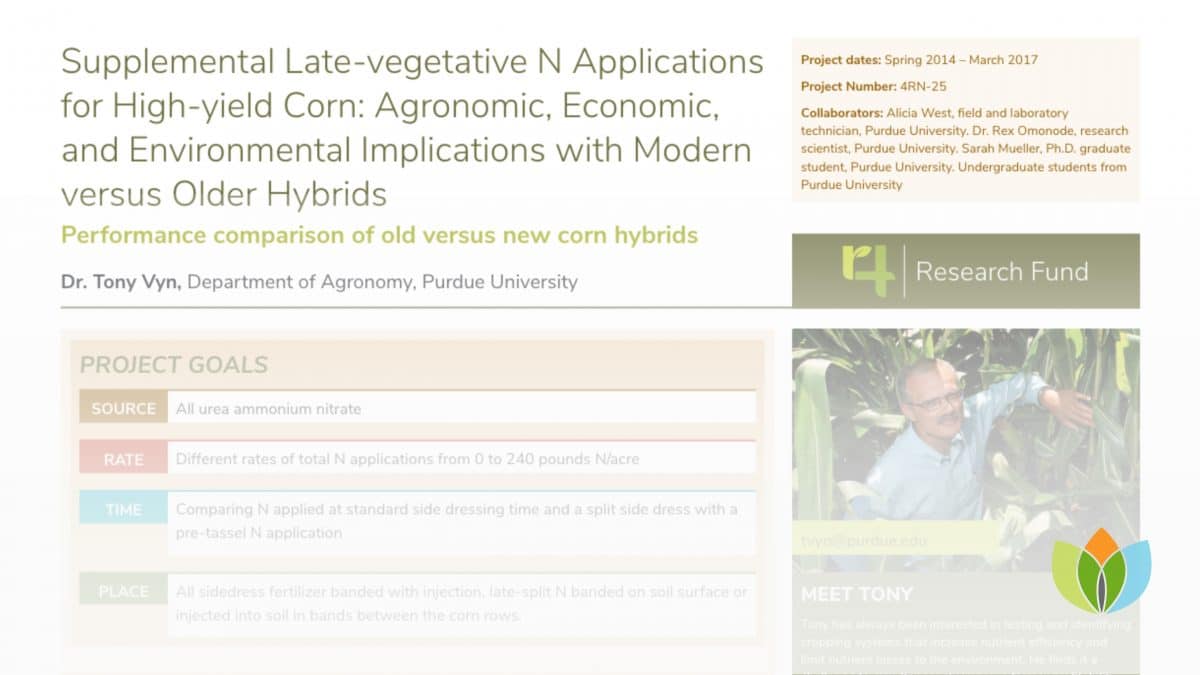
Crops: Corn for grain
4R Practices: Place

Lead Researcher:
Dr. Tony Vyn
Department of Agronomy, Henry A. Wallace Chair in Crop Sciences
Purdue University
Start Date: 2014
End Date: 2017
Modern corn hybrids have a “functional stay green” capacity whereby their leaves not only stay green longer during the grain filling period, but also maintain their photosynthetic capacity until much later in the grain filling period. Modern hybrids also yield more than hybrids of earlier decades because of their improved stress tolerance to plant density and other stress factors (whether pest-related factors or abiotic challenges). Therefore, one of the major corn management questions of our time is whether corn hybrids take up more of their total plant N during the reproductive period and, if they do, whether modern hybrids are more responsive to intentionally very late vegetative stage N fertilizer applications. We know that part of the positive response of modern corn hybrids to higher N rates is that total plant and grain uptake of other nutrients like P and Zn also increase.
Perhaps one of the more difficult negative environmental consequences to monitor with corn production systems is that of management consequences on greenhouse gas emissions. The cropping systems group at Purdue University has also done extensive work on monitoring greenhouse gases in corn production systems over the last 10 years, as the largest single pathway to reduce N2O losses to the atmosphere is to increase the N uptake by corn plants itself. This can be addressed by focusing on enhancing crop yield and total plant N uptake while minimizing N2O emissions.
